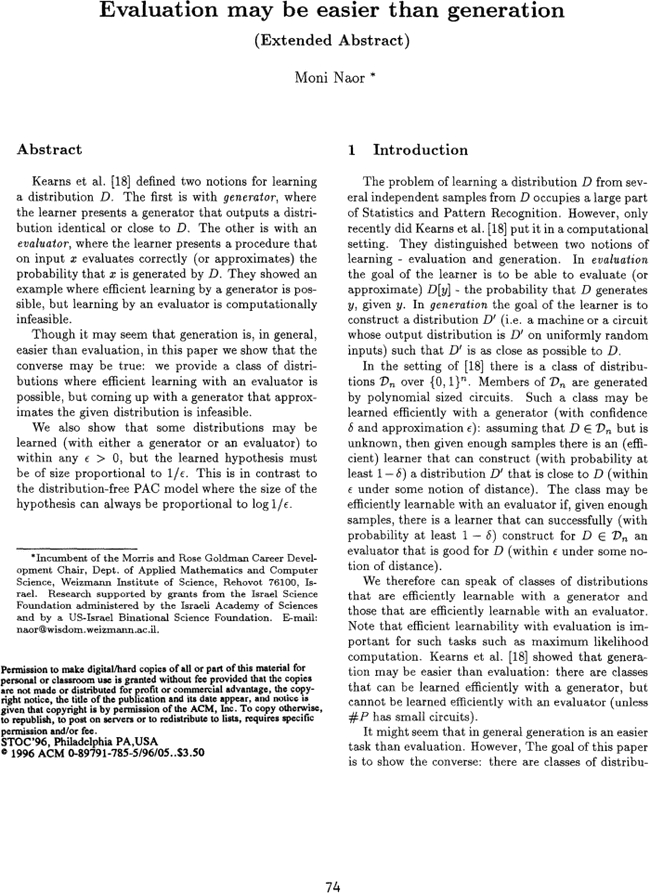Cited By
View all- Ghosal RIshai YKorb AKushilevitz ELou PSahai ASaha BServedio R(2023)Hard Languages in NP ∩ coNP and NIZK Proofs from Unstructured HardnessProceedings of the 55th Annual ACM Symposium on Theory of Computing10.1145/3564246.3585119(1243-1256)Online publication date: 2-Jun-2023
- De ADiakonikolas IServedio RIndyk P(2015)Learning from satisfying assignmentsProceedings of the twenty-sixth annual ACM-SIAM symposium on Discrete algorithms10.5555/2722129.2722162(478-497)Online publication date: 4-Jan-2015
- Hardt MRothblum GServedio R(2012)Private data release via learning thresholdsProceedings of the twenty-third annual ACM-SIAM symposium on Discrete algorithms10.5555/2095116.2095131(168-187)Online publication date: 17-Jan-2012
- Show More Cited By



